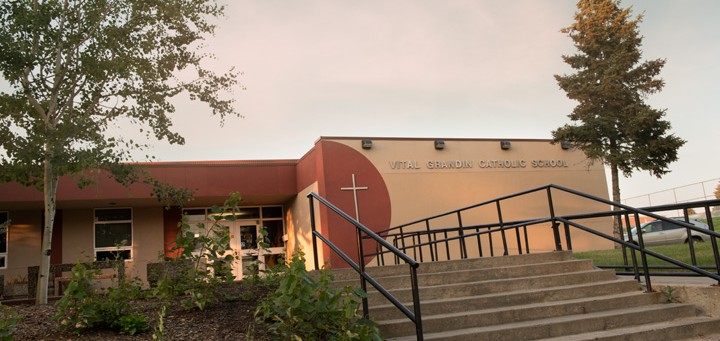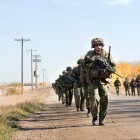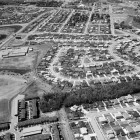
Then & Now
STURGEON HEIGHTS
December, 2015
Ever experience an epic fail persuading your boss to support your great idea only for it to be later fed back to you, near verbatim? Well, perhaps that’s how Father Lacombe felt in 1860 when Monsignor Taché suggested that the river valley south of where they were standing on snowshoes should be the new settlement. You must agree it was a great idea, and one day that great idea would become Sturgeon Heights, a thriving neighbourhood noted for spacious lots, mature trees and wide city streets with ample parking. It was one of the first four neighbourhoods planned with a focus on residential community, easy access to schools, plenty of green space, big boulevards and local amenities. All this is obvious when you walk along the modified grid-patterned streets. Here’s a look back.
1860
While Father Lacombe was building the Chapel in 1861, just up the hill from the Sturgeon River, he would look across to the area that would become Sturgeon Heights. Later that fall he would find himself pleased with the agreement to create the settlement of St. Albert at his preferred spot.
1930s
City tax records show that the first home constructed on the future Sturgeon Heights Street, now called Sunnyside Crescent, was built in 1936.
1950s
By 1957, plans were launched to create lots for new homes in the four new developments of Grandin Park, Mission Park, Braeside and Sturgeon Heights.
When you walk the areas, the focus on residential communities, boulevard trees, neighbourhood parks and local amenities becomes obvious.
St. Albert’s convention of naming streets with the first letter of the neighbourhood was also initiated at this time.
New housing developments featured lot options geared toward three groups of income earners: high, middle and low and were zoned accordingly.
Zone A homes cost $20,000 or more.
Zone B homes were a minimum 1080 square feet.
Zone C consisted of homes with plans approved by any National Housing Authority.
St Albert’s population was just over 2,200, and the City’s plan to grow to 30,000 required $11M to finance a project that would bring water from Edmonton and a sewer system to go along with it.
Roughly half of the Sturgeon Heights lots were registered before the end of the 1950s.
Fire protection for the town also improved thanks to the City adding a full-time chief, a new pumper truck and 15 volunteers.
1960s
By 1962, 250 of the 435 brand-new lots had new owners.
Early that same year, 150 new building permits were approved with another 140 permits in progress.
Fire insurance rates were cut by half when 24-hour protection services were introduced, facilitated by a new fire station, 3 full-time staff and 26 volunteers.
90% of the new home construction was completed by the end of the 1960s.
1970s
All the construction of the originally zoned homes in Sturgeon Heights was completed.
Now
2014 census shows the makeup of Sturgeon to be 655 single-family homes, 21 combined duplex and fourplex structures, and 16 apartment units.
Currently for 2015, 11 building permits are in progress—all renovations to existing homes.
While the previous architectural guidelines are no longer in place, there are specific bylaws set out for infill development with the goal of preserving the character of the neighbourhood.
Increasing interest in urban village and downtown developments balancing traditional residential neighbourhoods has caught the attention of city planners.
Count yourself extremely lucky if you own a lot in Sturgeon Heights. And keep your eye out for one if you want to relocate there. You have to agree—no matter whose idea it was—St. Albert continues to be an ideal location. t8n
Did You Know? Seymour Crescent is named after Ernest Seymour, our first policeman. The town engaged Seymour for the handsome sum of $40 a month.
Did You Know? St. Albert settlement was originally surveyed on the Quebec tradition of river lots because rivers were the main travel routes 160 years ago. River Lot 56 natural area remains as evidence of this tradition.
Did You Know? The City of St. Albert acted as its own developer in the 60s, renting equipment as required to build neighbourhood infrastructure. The resulting lots were about $2,500 less than lots in Edmonton. Today that’s equivalent to about $20,000.
Caption:
Archival Credit Provincial Archives of Alberta, RP398













